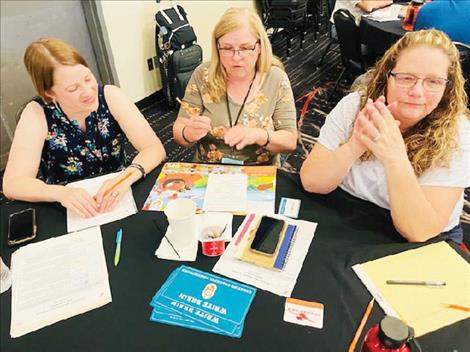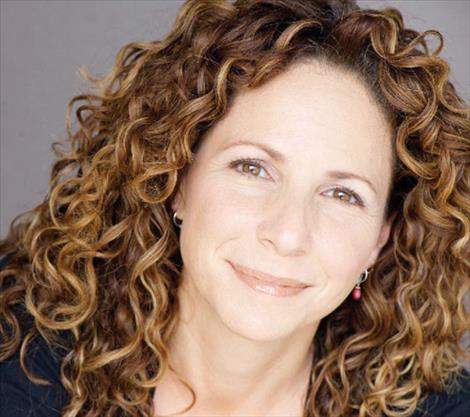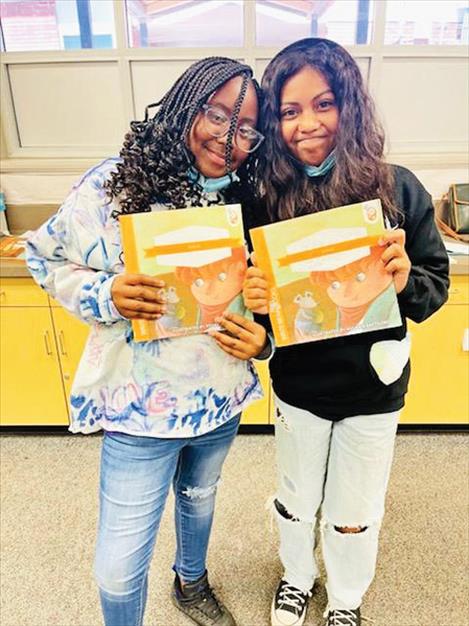Afterschool conference highlights need
Hey savvy news reader! Thanks for choosing local.
You are now reading
1 of 3 free articles.
POLSON — Educators from around the state gathered in Polson on June 27 and 28 to learn ways to bolster and support their afterschool programs at the 21st Century Community Learning Centers (CCLC) Summer Training conference.
21st CCLC is a program that provides federally funded five-year grants for afterschool programs through OPI in Montana. Each state receives funding scaled to the number of students served in the population, giving Montana a total of $6 million to be spread throughout the entire state. Of these funds, 93% goes out to grantees, and 7% stays at the state for staff to run the program.
According to their research, a total of 6,420 students in Montana attended 21st CCLC programs during the 2020-2021 school year and summer.
Operating with the foundational principles of responsibility, integrity, knowledge, freedom, passion, opportunity, sound judgement, and a win-win focus, 21st CCLC afterschool programs have proved vital in a wide variety of ways according to conference attendees.
“What happens (in afterschool) is what I call ‘disguised learning,’” said south central Regional Director Mark Branger of the Huntley Project. “They’re doing activities to teach things like math … It’s fewer worksheets and basically more hands on. It’s an extension, a supplement.”
This project-based learning can appeal to students in ways the typical school day curriculum can’t. If a student is uninspired by core curriculum they aren’t going to do well, explained attendee and actress Meredith Scott Lynn of Legally Blonde fame, now CEO and President of Write Brain World. “They have to supplement the school day to something that connects the kids to their subjects in engaging ways,” she said.
Some program directors reported improved school day attendance for chronically absent students who began attending afterschool programs. “They went to school because they were so excited to go to the afterschool program,” commented western Regional Director and 21st CCLC Grant Director Rae Herman of Hot Springs Schools.
Part of the draw for students, attendees speculated, was that afterschool programs are structured differently than the school day and tend to allow more decision making by the students. “Voice and choice,” Herman called it.
21st CCLC programs provide a wide variety of programs, from robotics and Lego leagues to media arts and children’s book writing programs.
Scott Lynn’s ‘Write Brain World,’ for example, sells project and social emotional based programs to schools, including a children’s book program. “I always say I went from Legally Blonde to literacy,” Scott Lynn commented. Through her program, children are asked to work collaboratively and independently to create a narrative from an existing set of illustrations. When their story is done, to encourage a passion for writing and bolster their confidence, each student author receives a professionally printed and bound book with their picture and author biography inside.
A Hot Springs afterschool program, led by agricultural education and shop teacher Justin Wright, helps prepare kids for life past high school teaching design skills and attention to detail with career-oriented activities such as welding, 3D printing.
“A lot of what we do teaches those same skills and those are transferrable working anywhere,” Wright said. “Stuff that’s fun and interesting does go into preparing them for careers, whether that’s in trades or not.”
Indigenous Studies Director Julie Lamebull and Elementary School Principal Evelyn Bigby serve students in the Harlem school district, where the population is approximately 98% Native. Much of what they offer in their afterschool programs is related to culture, for example, beading and making regalia, or dance and drum groups.
Places like Hot Springs and Ronan even have 21st CCLC programs that allow home schooled kids to attend their afterschool programs, rather than restricting it to only students within the public education system. “They need that interaction just as well,” Herman explained of her efforts to get this allowance pushed through all of the Flathead Valley.
“I think we forget too that the underlying principle of why (afterschool programs were) started is that it provides a safe place for kids to be after school before their parents get home,” Branger said. “It’s a wonderful, nurturing environment that also provides these other things and a safe place.”
“I’ve been doing this for 23 years. It’s not just to provide academic and enrichment and all these other components; I still go back to it’s for the kids who would go home and it’s an empty house with nobody there,” Herman added.
Several afterschool programs also see a sharp increase in attendance during the sports seasons. “In the winter months, when kids have practice later, they stay with us until their practice starts so they’re not travelling back and forth in bad weather,” Lamebull explained. “It’s important.”
For an afterschool program to qualify for 21st CCLC funding, it must have a 40% free and reduced lunch population. This translates to many students participating in these programs are low-income. “Sometimes the only meals these kids get are from after school and breakfast programs,” Herman said.
Many schools that do not receive a grant from 21st CCLC end up losing their afterschool programs. While some places make up the difference with boys and girls clubs funded by private donors, smaller communities may be forced to require a fee from parents, which many low income families are unable to afford. In some instances, smaller communities are simply left with no programs to offer.
Herman explained that when communities don’t have a program, kids still need a safe place to be, a snack to eat and a place to hang out with their friends.
According to statistics from the National Conference of State Legislatures, Montana is one of 23 states that does not provide any state funding for afterschool programs, leaving local programs to rely on federal grants and donations to function. Additionally, snack funding from OPI has run out, leaving the programs on their own for providing food for attending students. While some programs have been able to get creative and retain indirect funding for food in the form of supplies for cooking lessons, many need help from their communities.
Herman was able to provide food for her students through her ownership of the Lone Pine General Store. She and her business partners donate any food approaching its “sell by date” to the afterschool programs. She asks other grocery stores to do the same whenever possible. “Snacks are huge,” she emphasized.
As far as financial donations, all are tax deductible and welcome from any persons willing to contribute. Business partnerships can be of great help as well, Herman said, giving the example of Stockman Bank providing curriculum to teach a financial literacy program. To find out how to contribute to your local afterschool programs and support your community, call your school district or email Mark Branger at: mbranger@huntley.k12.mt.us.
“If they can stretch $6 million across the whole state and that’s staff, that’s programing, that’s food, that’s everything, then a little goes a long way,” Scott Lynn commented. “There’s so much need. And once you’re bitten by the afterschool bug, forget it. There’s nothing better.”


















